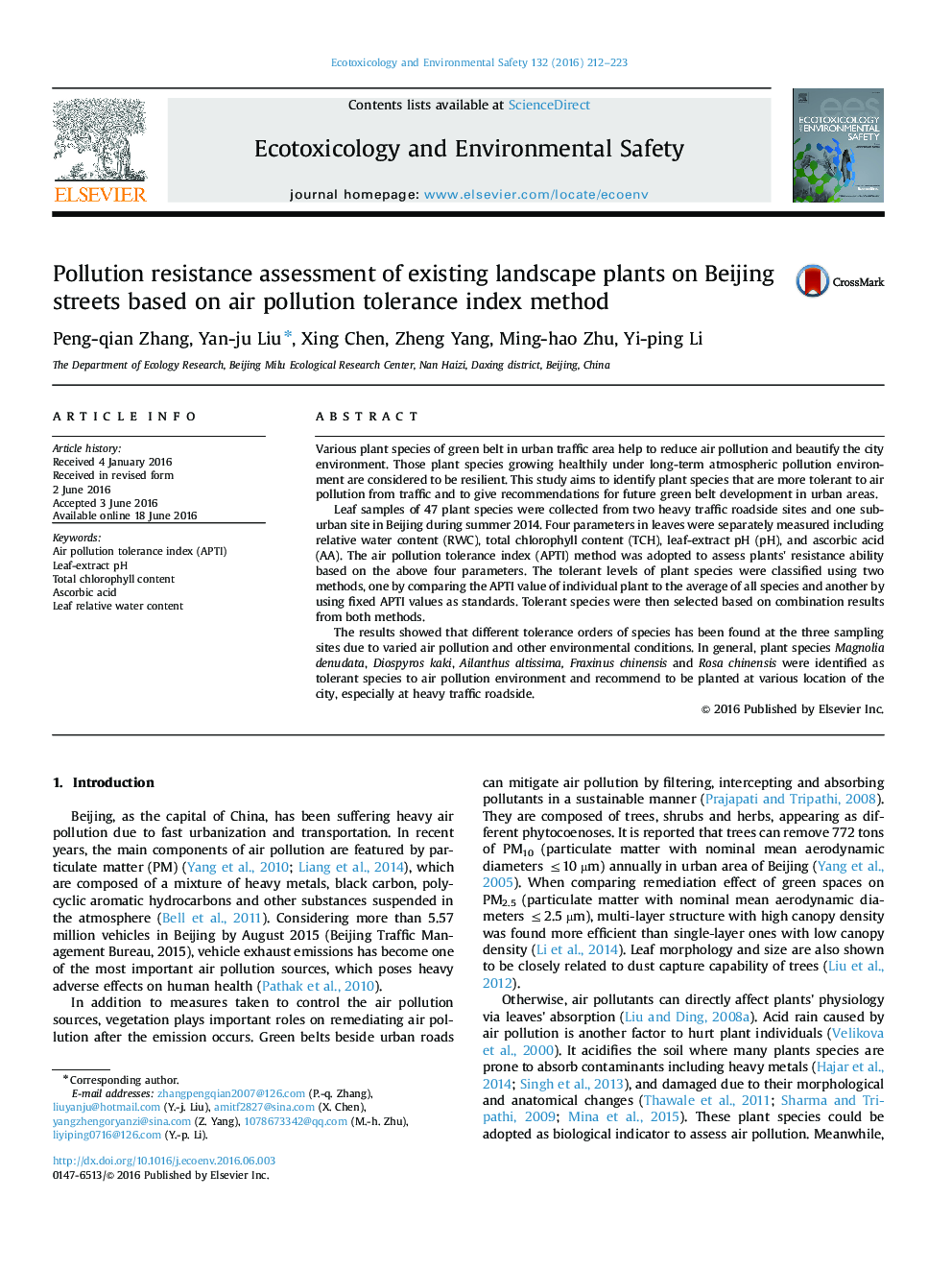| Article ID | Journal | Published Year | Pages | File Type |
|---|---|---|---|---|
| 4419112 | Ecotoxicology and Environmental Safety | 2016 | 12 Pages |
•RWC, TCH, pH and AA of leaves of plant species’ have been tested and analyzed by scientific analysis.•The relationship between RWC, TCH, pH and AA with air pollutants have been described and annalysed.•Plant species' tolerance to urban air pollution applying APTI method in two ways.
Various plant species of green belt in urban traffic area help to reduce air pollution and beautify the city environment. Those plant species growing healthily under long-term atmospheric pollution environment are considered to be resilient. This study aims to identify plant species that are more tolerant to air pollution from traffic and to give recommendations for future green belt development in urban areas.Leaf samples of 47 plant species were collected from two heavy traffic roadside sites and one suburban site in Beijing during summer 2014. Four parameters in leaves were separately measured including relative water content (RWC), total chlorophyll content (TCH), leaf-extract pH (pH), and ascorbic acid (AA). The air pollution tolerance index (APTI) method was adopted to assess plants' resistance ability based on the above four parameters. The tolerant levels of plant species were classified using two methods, one by comparing the APTI value of individual plant to the average of all species and another by using fixed APTI values as standards. Tolerant species were then selected based on combination results from both methods.The results showed that different tolerance orders of species has been found at the three sampling sites due to varied air pollution and other environmental conditions. In general, plant species Magnolia denudata, Diospyros kaki, Ailanthus altissima, Fraxinus chinensis and Rosa chinensis were identified as tolerant species to air pollution environment and recommend to be planted at various location of the city, especially at heavy traffic roadside.
